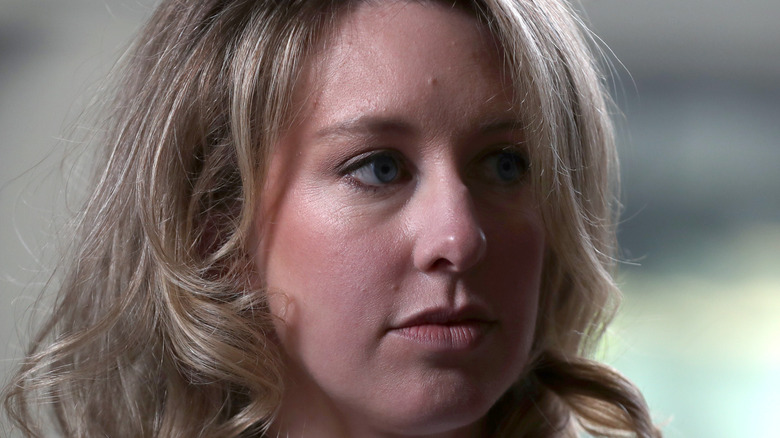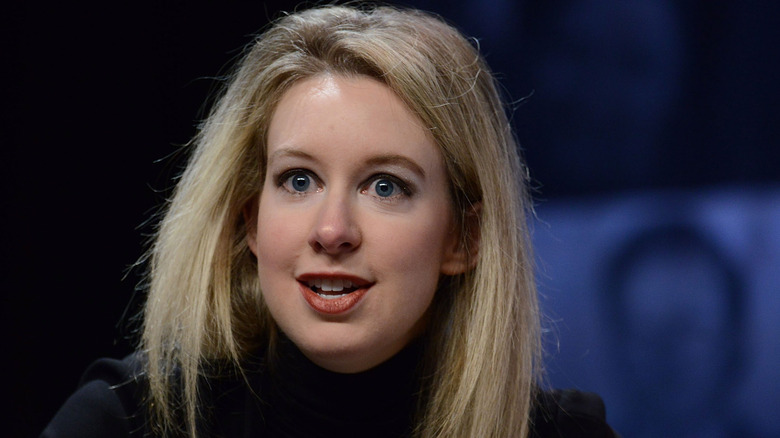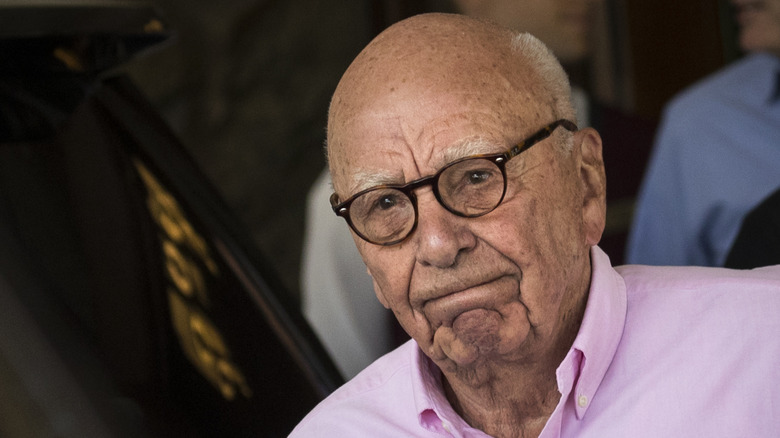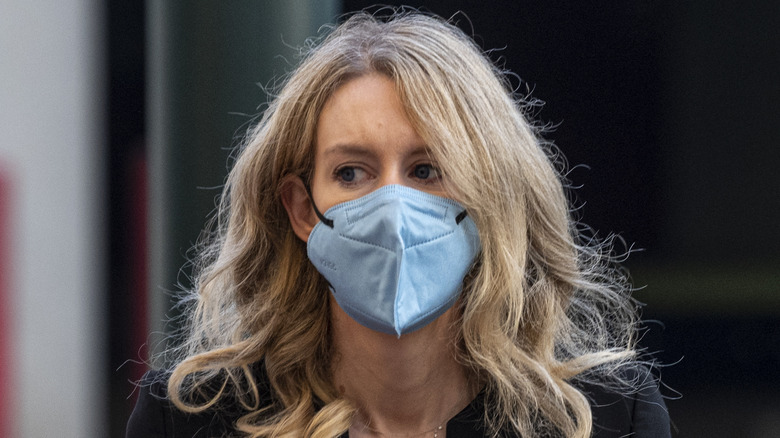Here's What We Know About Elizabeth Holmes' Guilty Verdict
She promised to change the face of healthcare by making blood testing quick, cheap, and easy. But what was left of Elizabeth Holmes' career crashed to an end when a jury of eight men and four women found her guilty, holding her accountable for four of eleven charges of fraud that were made against her (via The New York Times).
The verdicts came after seven agonizing days for the jury, which spent more than 50 hours before they found her guilty of three counts of wire fraud and one count of conspiracy to commit wire fraud against her company's investors. But she was found not guilty on four other counts, which had to do with Theranos' involvements with patients who had used the company's blood tests. The jury could also not decide on three other charges which involved deceiving investors, and those, the judge says, are likely to end in a mistrial.
But the four guilty verdicts will be enough to put Holmes away for some time. Each of the charges carries a maximum penalty of 20 years in prison, and while she is expected to be sentenced next week. The New York Times also said those sentences will likely be served at the same time. Stephanie Hinds, U.S. Attorney for California's Northern District said: "The guilty verdicts in this case reflect Ms. Holmes's culpability in this large-scale investor fraud, and she must now face sentencing for her crimes" (via The Washington Post).
Holmes says she was 'driven by a desire to discover something new'
The verdicts brought an end to the fairytale involving Elizabeth Holmes who was seen as a rising star at Stanford University. When she founded the company in 2003 (via The Wall Street Journal), she claimed she was driven by a childhood desire "to discover something new, something that mankind didn't know was possible to do." Vanity Fair credits that along with her phobia of needles to lead her on the path towards Theranos, a company that promised to diagnose a host of diseases from blood drawn with a prick to the finger.
Holmes may have been dreaming big, but her Stanford professors were cautioning her about what she was trying to sell. Stanford professor of medicine Phyllis Gardner told Vanity Fair that Holmes had been warned. "I told her, I don't think your idea is going to work," Gardner said. Concerns included the fact that the blood drawn from a fingertip would be contaminated, and that not enough blood could be drawn in order to get an accurate reading. In another interview, with The Wall Street Journal, Gardner, whose husband invested in Theranos, described Holmes as "a young kid with only rudimentary engineering training and no medical training."
Holmes attracted rich and powerful investors
Still, the would-be tech tycoon was so convincing she was able to raise hundreds of millions of dollars, and her investors became a roster of the world's rich and famous. Media magnate and Fox News owner Rupert Murdoch put in $125 million. The family of former education secretary Betsy DeVos threw $100 million into Theranos' kitty. Holmes even drew in the Walton family of Walmart fame and convinced them to invest $150 million. In 2017, Murdoch's multimillion dollar investment was worth a sinle dollar (via Daily Mail).
But while Theranos' investors packed a wallop, the technology itself underwhelmed — most notably because it didn't work. To fix that, Holmes left it to one man, scientist Ian Gibbons, to find a solution to Theranos' testing inconsistencies. It was Gibbons that warned Holmes that her technology wasn't ready, even as she was looking to open several Theranos Wellness Centers. The stress of working with Holmes was such that Gibbons eventually died by suicide.
If you or anyone you know is having suicidal thoughts, please call the National Suicide Prevention Lifeline at 1-800-273-TALK (8255).
Holmes' conviction is groundbreaking
Theranos's technology was revealed to be problematic in 2015, when The Wall Street Journal ran an exposé on the company, questioning its claims about its technology that could run 240 tests and detect many health problems including cancer. The paper revealed that the device, known as Edison, was only used for 15 tests and even then, its accuracy was in doubt. It also said doctors were avoiding Theranos because their tests were returning results that medical practitioners couldn't trust. As proof, it showed the result of one test conducted by the Theranos, and compared that to results taken from a hospital laboratory. It was later revealed during the trial that Holmes had tried to kill the story by going to the paper's owner and her investor, Rupert Murdoch (via Daily Mail).
The verdict handed to Elizabeth Holmes and Theranos stands out for several reasons. It's the first time a Silicone Valley executive is being held accountable for fraud. She is, as The New York Times describes her, "the most notable female executive to serve time since Martha Stewart." And as former federal prosecutor Jessica Roth puts it, the case "shines a light on the importance of drawing a distinction between truth and optimistic projections — and keeping that clear in one's mind."
Prosecutor Jeff Schenk could not have been more eloquent in summing up the case against her, when he said: "She chose fraud over business failure. She chose to be dishonest with investors and with patients" (via The Washington Post).



